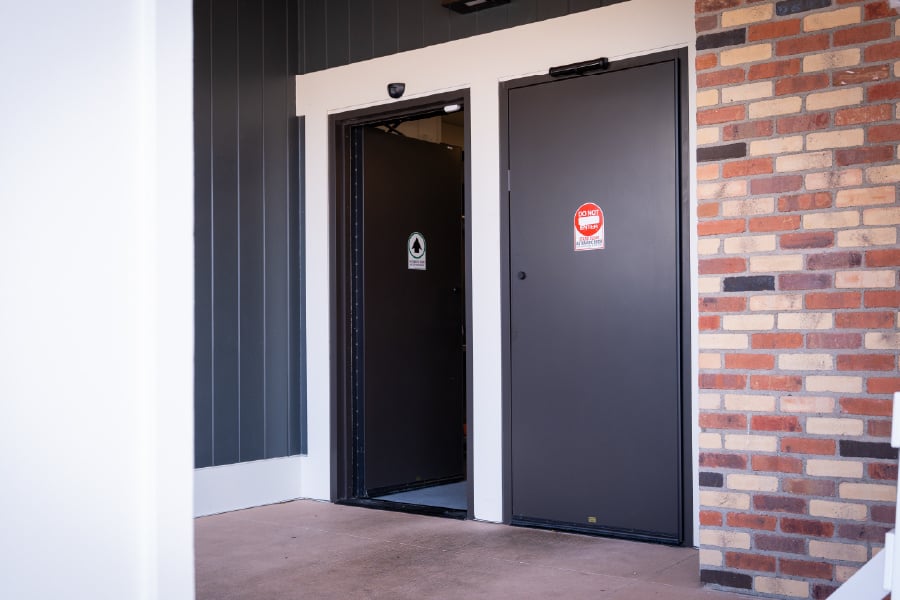
ADA compliance is one of those things that most buildings assume they’ve handled — until they realize they haven’t.
Maybe a hallway door is too heavy for someone using a mobility aid. Maybe a restroom doesn’t have enough clearance for the door to swing and still allow wheelchair entry. Maybe an automatic operator was installed, but the activation button is out of reach.
The signs aren’t always obvious. But for the people they affect, the impact is real.
ADA standards are designed to make public spaces usable for everyone. But too often, doors and hardware are overlooked during planning, or installed without considering how they’ll actually be used. That leads to rework, missed inspections, or worse—spaces that unintentionally exclude the very people they’re meant to serve.

What ADA Compliance Actually Requires
The Americans with Disabilities Act (ADA) lays out clear guidelines for how doors must be designed and installed to be accessible.
At a basic level, that includes:
- Door hardware that can be operated with one hand, without tight grasping or twisting
- Lever handles mounted between 34 and 48 inches above the floor
- Clear opening width of at least 32 inches
- A maximum opening force of 5 pounds for most interior swing doors
- Sufficient maneuvering clearance on both the push and pull sides
In Michigan, these standards apply to nearly all public spaces—including schools, hospitals, offices, and places of worship. While inspectors may not always flag every detail, the responsibility for compliance falls on the building owner.
Where We See Problems
Most noncompliance issues aren’t malicious. They’re the result of missed details or assumptions.
We’ve seen doors fail ADA compliance because the closer was too strong, or the access control hardware interfered with operation. We’ve seen restrooms with compliant hardware but no way to open the door without backing up. We’ve even seen power-assisted openers installed at the correct height, but wired to operate with more than five pounds of pressure, voiding the very accessibility they were supposed to provide.
It’s not about catching people doing it wrong. It’s about helping them get it right.

How S.A. Morman Supports Compliance
Our team helps architects, contractors, and facilities leaders review ADA requirements early, before doors are hung or hardware is ordered. We advise on code, check for compatibility, and flag potential issues that could lead to costly rework or noncompliance.
That might mean recommending a different closer with adjustable force, adjusting the handle location, or verifying that power operators meet both code and real-world use expectations.
We also help with post-installation audits. If a space was inherited, renovated, or updated over time, we can assess where the gaps are and help bring openings into compliance, without overhauling everything.

The Bottom Line
ADA compliance is about more than code. It’s about people. It’s about making sure everyone can move through your space with ease, dignity, and independence.
S.A. Morman helps ensure that your doors don’t become barriers. We bring code clarity, product knowledge, and a commitment to accessibility that supports both compliance and everyday use.
If you're unsure whether your openings are compliant, let's walk through them together. We'll help you see what needs to change—and how to change it right.

